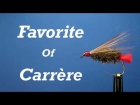Rules & regulations
There are laws in Denmark too, and some of the deal with fishing. The most important ones are these
Licensing and rules
There are laws in Denmark too, and some of the deal with fishing. The most important ones are these
- To fish in Denmark you have to have a state license -- always. This can be obtained from any post office and most places where local fishing licenses are sold.
The license will cost you DKr 100 .- for a year (App. US$ 18.-) or DKr 50.- for a week or DKr 25.- for a day.
- Fishing the coast is free apart from that, while most fresh water fishing (stream or lake) will mean buying a license to the specific water
- All beaches are public property, and you are allowed to walk on them and fish from them. Some are part of private land, and you can't stay, sit or rest on these, but have to walk past on the beach or in the water. A few beaches are on protected or military areas and can be closed all or part of the year.
- No one can prevent you from walking on a beach, but you can be prevented from gaining access to the water crossing private land.
- It's illegal to fish within 75 meters (200') of any kind of nets, fish traps etc. These are sometimes placed very close to the shore, so show consideration.
- On the other hand it's illegal to place monofile trout nets closer than 100 meters (300') to the shore. These are also sometimes placed much too close to the shore, which is not only illegal, but also very annoying.
- Fishing in estuaries is generally illegal. Observe a no-fishing zone of 500 meters (1500') on each side and in front of any larger esturary, and you're safe. Actually only the largest streams are protected. Smaller creeks are only protected in the winter. Fishing in the river or creek itself is illegal without a local license. Check with maps and local authorities.
Not having a proper license can get you kicked off the water (in the best case), but could in extreme situations mean that your fishing tackle was confiscated and you were fined -- the law permits this. Inspectors can be official rangers or members of local clubs. Ask for ID if you are in doubt, but respect what these people say to you.
Minimum measures
The minimum measures and season for the most common salt water species are:
| Species | Measure | Season |
|---|---|---|
| Sea trout | 40 cm (16") | All year* |
| Steelhead | 40 cm (16")** | All year* |
| Salmon | 60 cm (24") | All year* |
| Cod | 40 cm (16") | All year |
| Garfish | None | All year |
* Colored fish which are on their way to or from spawnin must be released between November 15th and January 15th.
** There are no legal limits to rainbow or steelhead trout (which are not wild fish), but many fishers prefer to follow the same rules that apply to sea trout.
Most trout are 40-50 cm (16-20") and weigh between 1 and 1.5 kilos (2-3 lb.). But fish weighing 4-8 kilos (8-16 lb.) are not umcommon.
Fish larger than that are only rarely caught from the shore, but sea trout and salmon up to 10 kg (20 lb.) and even 15 kg (30 lb.) are caught from boat every year.
Related articles
Read more about why you should register.
More content from the front page
Since you got this far …
… I have a small favor to ask.
Long story short
Support the Global FlyFisher through several different channels, including PayPal.
Long story longer
The Global FlyFisher has been online since the mid-90's and has been free to access for everybody since day one – and will stay free for as long as I run it.
But that doesn't mean that it's free to run.
It costs money to drive a large site like this.
See more details about what you can do to help in this blog post.



























































